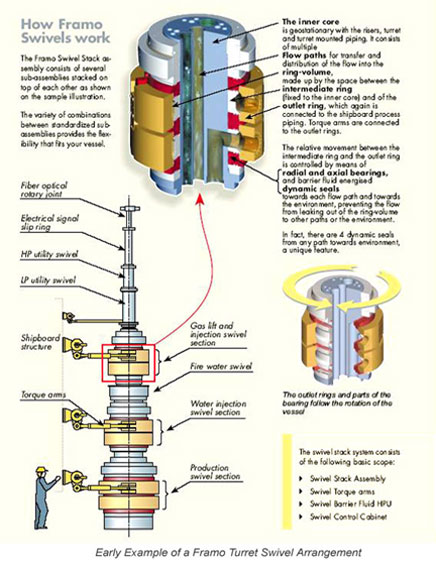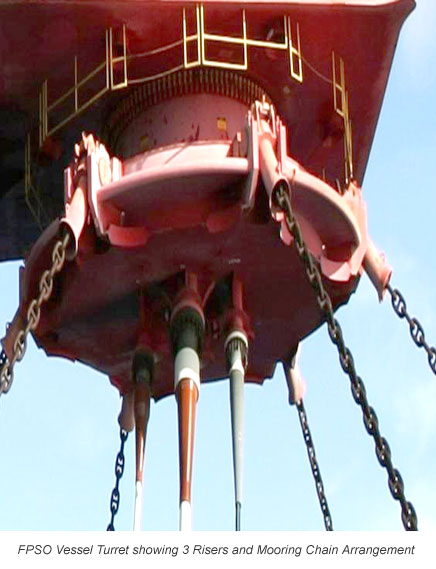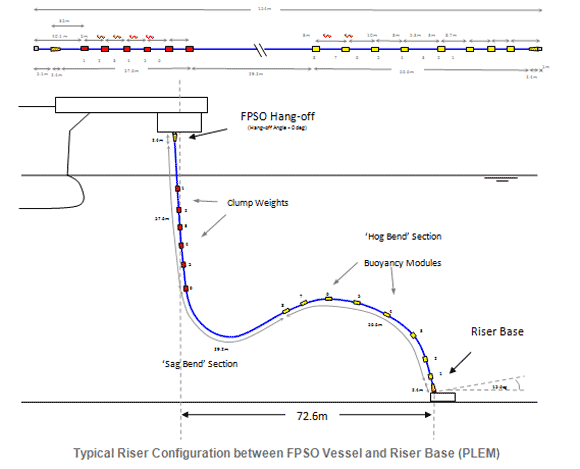Flexible Risers
The long-established method of transferring high volumes of hydrocarbon product between a constantly-moving floating production, storage and offloading (FPSO) vessel and a static seabed-positioned pipeline end manifold (PLEM) or subsea wells is via flexible risers. If required, instrumentation for monitoring production pressures, temperature and comingling different flows via subsea valves can be provided by adding a dynamic controls umbilical alongside the flexible risers.



Flexible riser dynamic analysis should include but not be limited to the following criteria where we:
- Perform Dynamic Orcaflex Analysis accounting for the actual flexible riser properties, fluid contents, FPSO hang-off angle and heading from the FPSO. The work to be performed for the production and any other (e.g. water injection) risers to ensure that, under extreme conditions, none of the flexible risers exceed their design operating parameters. Quantities and positioning of buoyancy modules shall be determined to ensure acceptable operating conditions.
- Carry out Configuration Analysis to determine optimum configuration for the flexible risers such that under extreme conditions the risers do not exceed their acceptable operating conditions.
- Carry out Clearance Analysis to ensure that the selected configuration/orientation of the risers does not result in clashing between flexible risers, control umbilical and the FPSO vessel’s mooring lines.
- Iterative analysis shall be performed to determine an acceptable riser arrangement to minimise the risk of clashing.
(Please visit theMarine Engineeringsection to see an example of our C&C Global Analysis)
